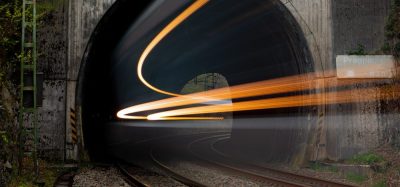Current GSM-R situation in Germany
Posted: 3 April 2007 | | No comments yet
In 2005, Deutsche Bahn AG became the first transport undertaking in Europe to implement the new standard for digital train radio on the GSM-R system platform (Global System for Mobile Communications – Rail). DB AG is thus pioneering the technological transition from the older analogue communications facilities to the new generation of digital systems. DB Netz commissioned the DB subsidiary DB Telematik to plan and build the infrastructure for the new mobile radio systems and to manage technical operations.
In 2005, Deutsche Bahn AG became the first transport undertaking in Europe to implement the new standard for digital train radio on the GSM-R system platform (Global System for Mobile Communications – Rail). DB AG is thus pioneering the technological transition from the older analogue communications facilities to the new generation of digital systems. DB Netz commissioned the DB subsidiary DB Telematik to plan and build the infrastructure for the new mobile radio systems and to manage technical operations.
In 2005, Deutsche Bahn AG became the first transport undertaking in Europe to implement the new standard for digital train radio on the GSM-R system platform (Global System for Mobile Communications – Rail). DB AG is thus pioneering the technological transition from the older analogue communications facilities to the new generation of digital systems. DB Netz commissioned the DB subsidiary DB Telematik to plan and build the infrastructure for the new mobile radio systems and to manage technical operations.
Economics and the European initiative
As a provider of transport and logistics services, mobility is the key to almost eve-rything at Deutsche Bahn – including mobile communication. However, the various analogue technologies used for railway radio are no longer state-of-the-art and are now reaching their limits particularly with respect to network coverage and system expansion capabilities. The growth in the size of the analogue transmission facilities is also the cause of high maintenance and repair costs.
In contrast, the digital system platform GSM-R offers a number of sustainable benefits. Standardisation enables operating costs and the time required for system adjustments to be reduced. In addition, the new systems offer user-friendly attributes and improved reachability for mobile subscribers. By deploying digital transmission technology, DB has made the German train radio system not only more economical, but also the most advanced system in Europe.
Join our free webinar: Rail cyber-security in a time of technological and regulatory transformation
Join our expert panel, including speakers from Nokia and Siemens Mobility, to explore the critical convergence of cybersecurity and 5G rail comms.
Date: 3 Dec | Time: 15:00 GMT
Can’t attend live? No worries – register to receive the recording post-event.
The impetus for change came from the European legislators. The EU directive 96/48 stipulated the introduction of digital technology initially for the trans-European high-speed railway network. In the course of European harmonisation and the interoperability of railway transport, GSM-R was later also prescribed in EU directive 2001/16 for conventional trans-European railways systems.
Challenges in the GSM-R project
Deutsche Bahn has pioneered the implementation of EU directive 2001/16. The migration to a new technology, as yet untested in conventional train radio, is being carried out while normal services are running. Guaranteeing smooth, uninterrupted railway traffic is therefore imperative. Comprehensive test network scenarios support the introduction of the new system while normal network services are running. The complex technical planning work was based on the GSM mobile communication standards already in use throughout the world. The task for DB Telematik was to utilise these proven standards for the first digital train radio system.
The scope of the project was a particularly challenging aspect. To ensure optimal network coverage, a total of approximately 2,900 base transceiver stations needed to be built. Approximately 10,000 trains have now been fitted out with digital equipment – the subproject finished 2004. All of DB Netz’s network management centres and railway operating control points require GSM-R fixed-network components. Training courses must also accompany the introduction of the new technology. In the first basic package, a total of 24,500km of track will be converted step by step to digital train radio.
The German railway radio network has been classified as a railway traffic system and is therefore subject to statutory provisions and acceptance procedures. For instance, the parallel use of analogue and digital technologies on a single line is not permitted. Vehicles must therefore be equipped with a dual train radio system that enables rapid switching between technologies at, as it were, the touch of a button. A further requirement is connecting the German GSM-R system to the trans-European railway network. 58 border crossings to nine countries need to be prepared. These aspects necessitate close cooperation and consultation with neighbouring railways, the relevant supervisory bodies, the Federal Railway Office (EBA) and the regulatory authority for telecommunication and postal services (BNetzA).
Current status of digital train radio in Germany
The requisite infrastructure for the GSM-R project was effectively completed in 2005. Approximately 2,900 base transceiver stations have now been installed, each equipped with its own switching and control interfaces. Train conversion work was also completed on schedule. With the implementation of the GSM-R fixed network components into the DB Netz network management centres and operating control points, all railway sites are now connected to the new mobile radio network. Using new digitally enabled terminals, stationary subscribers, such as signallers located along the lines, can now participate in operative communications via the GSM-R system.
The new digital technology permits group calls and all-calls to be made, which allows simultaneous communication with multiple subscribers in, for example, pre-defined radio cells. Calls can be prioritised or suppressed as required. Emergency calls, for example, are assigned absolute priority. The technology is also capable of blocking specific connections so that a driver, for instance, can only be contacted by authorised persons. The introduction of the GSM-R system has also made of train radio simpler to use. Besides the person-level addressing previously available, voice calls within the GSM-R system will in future be able to use functional or location-dependent addressing, which is made possible by parameterising organisational and rail network data and by configuring the relevant radio cell structure. It is now, for instance, very simple for a signaller to contact the driver of a passing train.
The safe operation of the GSM-R network is guaranteed by a three-tier operating and service concept. The central control infrastructure and a regional network administration guarantee network operation 24 hours a day, 365 days a year. With its nationwide service organisation, DB Telematik offers rapid response fault elimination and maintenance services throughout Germany.
As from the beginning of March 2005, there are now more than 20,000 route kilometres in operation with GSM-R train radio at Deutsche Bahn AG including the highly frequented mixed mode Karlsruhe – Basel route, which includes a roaming agreement with Switzerland. That means that more than 80% of the GSM-R basic package is in operation. To enable this, some 2,900 base transceiver stations (BTS), 63 base station controllers (BSC), seven mobile switching centres or operation & maintenance centres (MSC/OMC) and a network management centre (NMC) had to be set up, approved and integrated. In addition, more than 3,000 landline subscribers were linked up and some 10,000 vehicles were retrofitted. 99% of the basic package covering some 24,500 route kilometres will be completed in the middle of the year.
As there is no European reference project for digital mobile radio applications in railway operations, the project team is making use of the practical experience that is being gained as the project progresses. Continuous monitoring and optimisation processes are ongoing. This has led to the realisation that because of the sheer complexity of all the factors influencing the system, the risks associated with switching over large sections of track on a single specific date are unacceptable. In response, the migration process has been modified so that it will now occur in smaller operationally related line packets. Deutsche Bahn publishes information on the current commissioning status of digital train radio services on specific sections of the German rail network on its website at: http://www.db.de/site/bahn/ en/business/ infrastructure__energy/ track__infrastructure/ gsmr/gsmr__news.html.
Outlook and future use
By bundling all radio applications in one digital standard, DB has created an innovative platform with significant potential for growth. In future, inter-application communication linking all areas of railway operations will be possible. The new digital technology is also be used for remote diagnostic purposes and for data transmission in train control and train protection applications.
In addition, using a European standard opens up prospects of new levels of cooperation with foreign railways, thereby contributing to a reduction in cross-border journey times. Future developments will be shaped by the demands and economic feasibility of potential applications. With the new GSM-R system, the technical base for such developments is already in place.
Attention in the GSM-R project is currently centred on extending an additional route package (approximately 5,000km) and on the introduction of GSM-R shunting radio throughout the whole of Germany.
Shunting radio based on GSM-R is being tested in various marshalling yards at present. The roll-out is to start in phases, probably as from the 3rd quarter of 2007. For large shunting areas, extensive system adaptation and expansion is required. Traffic controllers must, for example, be able to contact particular receivers (staff in shunting groups) by means of group calls. The GSM-R network is first of all being upgraded for that purpose.
For less complex shunting movements, point-to-point communication is sufficient in many cases. 1,200 ‘less complex shunting areas’ are currently being surveyed with regards to their suitability for radio operations.
Global Railway Review Autumn/ Winter Issue 2025
Welcome to 2025’s Autumn/ Winter issue of Global Railway Review!
The dynamism of our sector has never been more apparent, driven by technological leaps, evolving societal demands, and an urgent global imperative for sustainable solutions.
>>> Read the issue in full now! <<<





